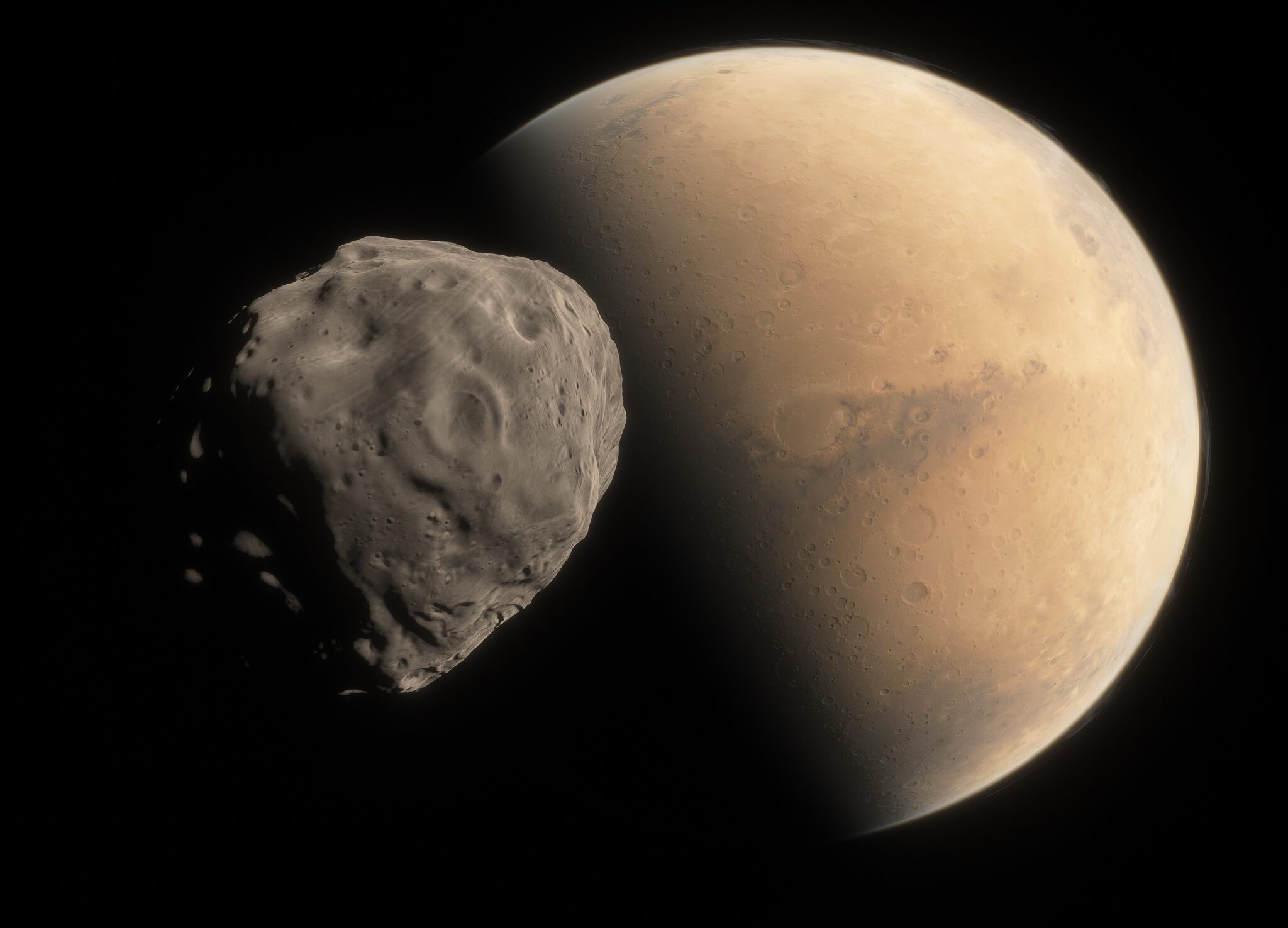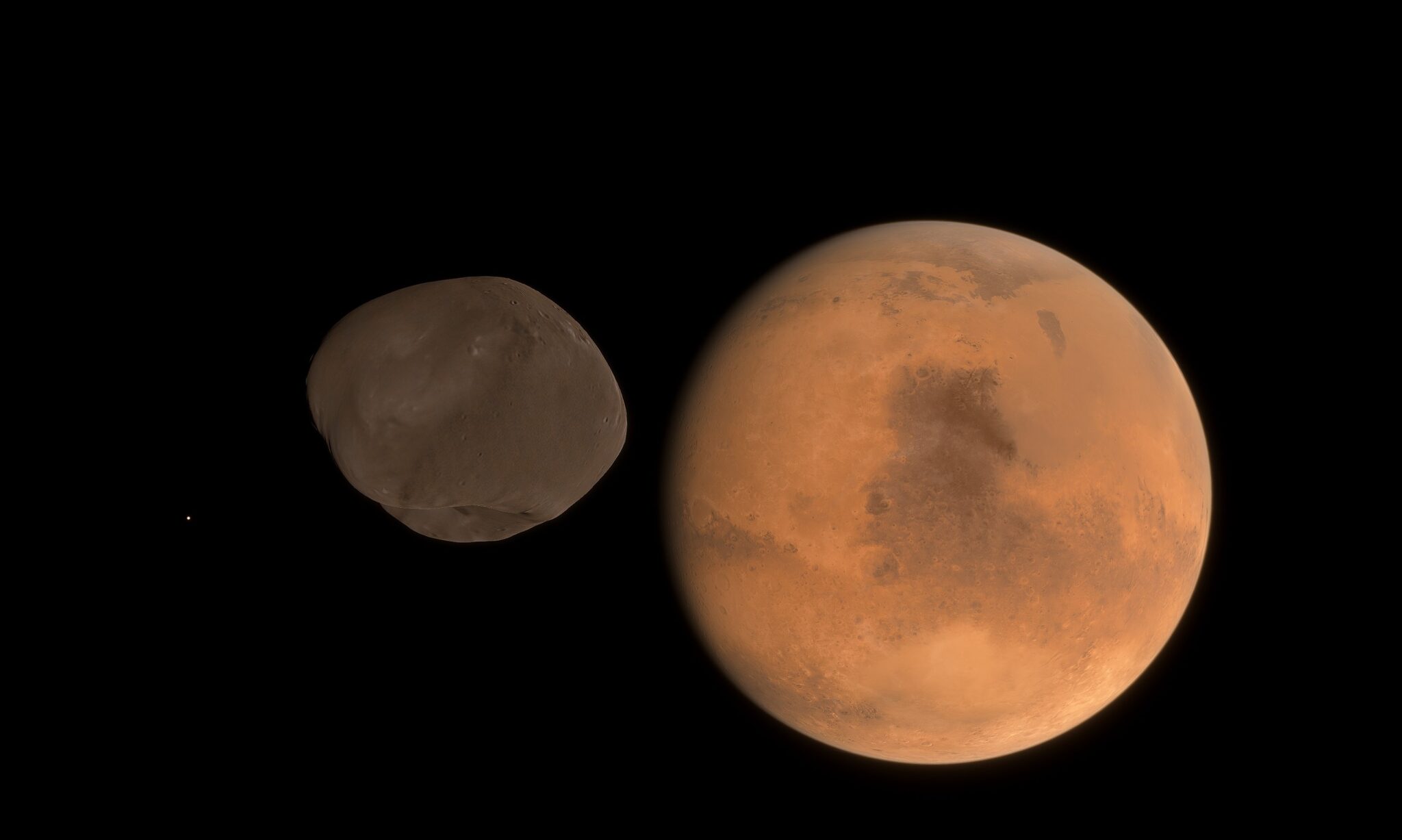The generally accepted opinion about the moons of Mars – Phobos and Deimos – is that they were either created like the Moon, cut out of the planet as a result of a collision with a large object, or they were captured asteroids, or the remnants of an earlier moon that disintegrated in the early stages. But a team of scientists from France and Germany hypothesized that Phobos could have formed from a comet. This idea is equally suitable for explaining the origin for Deimos as well.

In their study in the journal Astronomy and Astrophysics, scientists analyzed images of Phobos taken by the Mars Express spacecraft between 2004 and 2022. Analysis of the data from the images shows that Phobos has properties similar to comets, in particular the reflection of sunlight and a porous sandy surface.
The detected signs led scientists to believe that Phobos could be a comet that was captured by the gravitational field of Mars. Perhaps Phobos and Deimos are the remnants of the same comet that broke up in the distant past.

To study the origin of these moons in more detail, Japan plans to launch the Martian Moons eXploration (MMX) mission before the end of this decade. The spacecraft will explore Phobos, and then Deimos and Mars. It is even planned to land on the surface of Phobos to collect soil samples that will be delivered to Earth.
The study of these samples can reveal important information about the chemical composition of the moons and, possibly, provide an answer to the question of their origin.
Earlier, we reported on how scientists prepared to search for the treasures of Mars.
According to iflscience.com


